Rome was not always a dominant power in ancient Europe. At the beginning of this mod's timeframe, in 323 BC, Rome was but a small collection of cities in central Italy. It would take numerous wars over the course of the next few centuries before Rome could become the greatest state in the western world. The question is, can you follow history and create a prosperous, powerful Rome? Can you lead her armies to victory against even the most powerful Hellenistic kingdoms?
Gameplay Information
Faction Bonuses
- All siege units have +3 range and +3 Line-of-Sight
- Receive 2 siege weapons for free whenever a new Siege Factory is built
- Conquered cities assimilate 200% faster
- Citizens 33% cheaper
- Military research at the library is 33% cheaper
The Romans are a highly offensive faction and are one of the most potent available in The Hellenistic Era, with their bonuses reflecting best what the Romans were known for: sophistication in military engineering, mixed in with a penchant for brutal melee clashes and their extension of citizenship to conquered peoples, which definitely helped the Roman empire in real life stay as one in the long run. Their siege bonuses allow them to capture enemy cities and destroy enemy fortifications with much more ease. Furthermore, cities captured by the Romans assimilate twice as quickly and their citizens are cheaper, so they also have less trouble holding onto their territorial gains. Cheaper military research gives the Romans the opportunity to increase their population limit and reform their armies before their opponents.
What really makes the Romans shine is their army. Their soldiers start off as hardly adequate, but they can drastically improve their army by researching reform techs. Once the second reform tech has been researched, the Romans have access to one of the greatest armies available. An infantry-centric force, they will dominate in melee, even capable of defeating the menacing pike-phalanxes of the Successor States. Apart from a somewhat weak starting army, the only other thing pulling the Romans down is their lack of unit diversity. Despite having a most impressive heavy infantry force, they lack effective light infantry or cavalry components. When the level 2 reforms are accessed, the Romans lose access to cheap light infantry altogether, hindering their ability to quickly pull together a force in times of crisis.
Overall the Romans are a very capable faction, and although they start slow, once they have a fully-upgraded army, they are incredibly difficult to stop. If you are fighting against the Romans, the best game strategy is to rush them and take them out before they become too strong. The best counter against the Roman juggernaut would be to use light cavalry and light infantry to pull them apart from afar, while avoiding head-on assaults.
Unit List
Starting Units (based on the Camillan army)
The most basic soldiers available to the Romans, these cheap slingers serve as little more than a distraction, and will be quickly cut down in a melee. However their armour piercing attack might prove to be useful against more heavily-armoured opponents. Historically, they were used as light reserves.

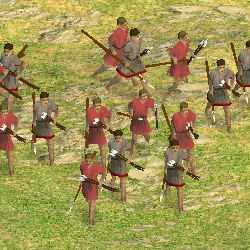
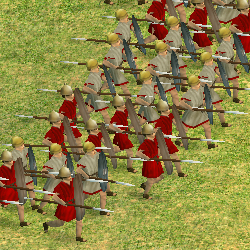
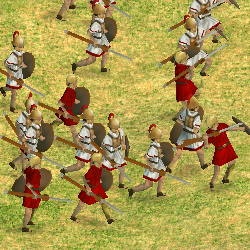
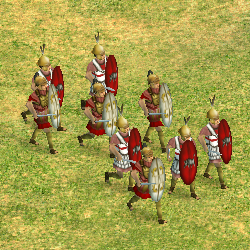
The most experienced and best-armoured soldiers of the Roman legionary formation are the triarii. Armed with the hasta thrusting spear, wearing heavy armour and carrying a clipeus shield, these men are costly to recruit, but their prowess in battle makes it worthwhile. Historically, the triarii were the oldest and wealthiest of the Roman infantry, forming the third line in battle. They were generally kept as a reserve, and would only fight if the hastati and principes were unable to defeat the enemy. The triarii would fight in the phalanx formation like the hoplites of old.
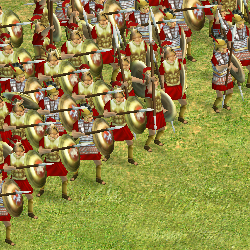
The equites are an expensive force of medium cavalrymen. They wear a linothorax or pectoral plate, making them somewhat capable of shock actions, and are armed with swords. While they may not be as effective as similarly priced cavalry units of other factions, they are still decent units. Historically, the Roman equites were made up of wealthy and influential nobles. They would usually be deployed on the flanks of the army.
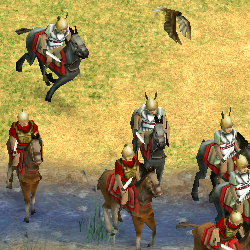
Pedites extraordinarii are Rome's elite heavy swordsmen. Well-trained and well-protected, these men are expensive but effective. Their equipment is of Greek influence, with a bronze muscled cuirass, helmet, aspis shield and a kopis slashing sword. Historically, the pedites extraordinarii were the best fifth of the socii infantry and were selected to serve as a special unit.
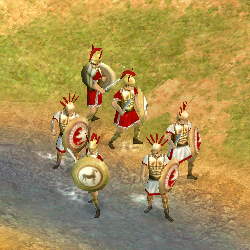
The equites extraordinarii are heavy shock cavalry units, able to cause much disorder and damage with their deadly charges. Armed with a xyston lance and wearing expensive bronze cuirasses, attic helmets and greaves, these are high quality cavalry units, though they are costly to recruit. Historically, equites extraordinarii were the best third of the socii cavalry. Many of them would have been Campanians, who were well known for their fine horsemen.
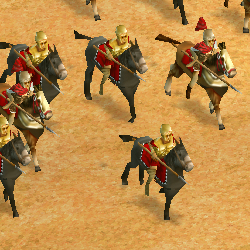
These elite heavy cavalry are the best soldiers available available to Rome. They are incredibly well trained and have the finest armour available, and their charges are absolutely devestating. Of course, such men come at a high cost, but it only takes a few of them to change the outcome of a battle. Historically, they formed a small, loyal bodyguard that protected the consuls and other high-ranking officials.
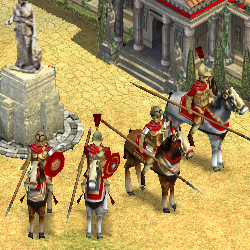
Level 1 Reform Units (based on the Polybian army)
The velites are the lightest units of the Polybian army. Like the Camillan leves, these lightly-armoured javelineers are best used for skirmishing, as they will be quickly slaughtered if the enemy reaches them. They are distinguishable by the animal skins they were on their heads. Historically, the velites were too young or too poor to fight as hastati. They served the same function as the earlier leves, harassing the enemy before withdrawing behind the heavy infantry.
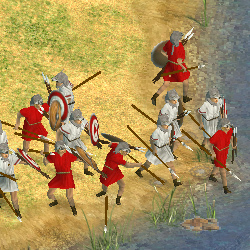
The hastati reformati are the lightest and cheapest of Rome's reformed heavy infantry. They are armed with javelins and protected by a shield, helmet, one greave and a bronze pectoral plate. These soldiers can stand their ground against enemies, but not for long enough to defeat a heavier force. Historically the hastati were the youngest and poorest of the legionary heavy infantry. Forming the first line, they would wear down the enemy, and if they couldn't defeat them, they would withdraw behind the second line.
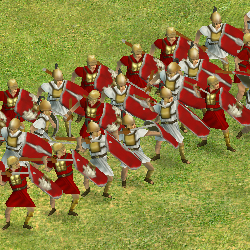
These men are well-armoured and well-disciplined, serving as reformed medium swordsmen. They have a helmet, shield, one greave and a chain mail coat to protect them at close quarters. However they are relatively expensive and take a while to train. Historically, the principes were family men in their prime, and they formed the second line of infantry. They would engage the enemy after the hastati retreated, and if they were also unable to break the enemy, they would withdraw behind the triarii.
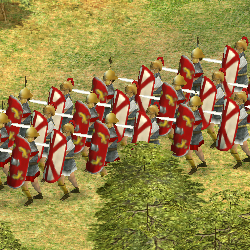
The most experienced and best-armoured soldiers of the Polybian Roman legionary formation are the triarii. Armed with the hasta thrusting spear, wearing a chain mail coat and carrying a scutum shield, these men are costly to recruit, but their prowess in battle makes it worthwhile. Historically, the triarii were the oldest and wealthiest of the Roman infantry, forming the third line in battle. They were generally kept as a reserve, and would only fight if the hastati and principes were unable to defeat the enemy. The triarii would fight in the phalanx formation like the hoplites of old.
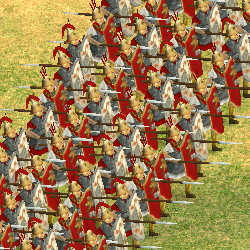
The equites reformati are an expensive force of reformed medium cavalrymen. They wear a chain mail coat, making them somewhat capable of shock actions, and are armed with swords. While they may not be as effective as similarly priced cavalry units of other factions, they are still decent units. Historically, the Roman equites were made up of wealthy and influential nobles. They would usually be deployed on the flanks of the army.
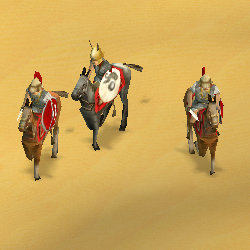
Level 2 Reform Units (based on the Marian army)
The cohors reformata is a superb professional heavy infantry unit. These reformed swordsmen have high quality equipment, including a chain mail coat, a scutum shield and a Montefortino or Coolus-type helmet. They take a long time to train, but their levels of discipline and endurance makes it worth the trouble. Historically, the Marian reforms affected the Roman army in many ways. There ceased to be any form of property requirements, so men of all social classes could fight in the legion. The Marian legionaries were uniformly equipped and they had to carry as much of their equipment as possible (which is why they became known as "Marius' mules"). They became increasingly loyal to their generals, who had to take care of the veterans.
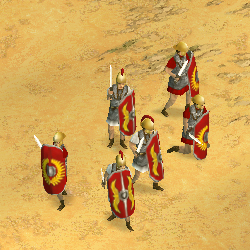
The cohors iaculatores is a superb professional heavy infantry unit. These reformed javelineers have high quality equipment, including a chain mail coat, a scutum shield and a Montefortino or Coolus-type helmet. They take a long time to train, but their levels of discipline and endurance makes it worth the trouble. Historically, the Marian reforms affected the Roman army in many ways. There ceased to be any form of property requirements, so men of all social classes could fight in the legion. The Marian legionaries were uniformally equipped and they had to carry as much of their equipment as possible (which is why they became known as "Marius' mules"). They became increasingly loyal to their generals, who had to take care of the veterans.
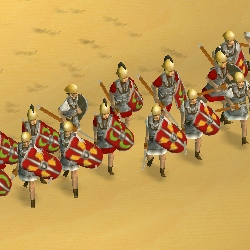
The equites alares are an expensive force of medium cavalrymen, highly capable of both skirmishing and shock actions. These men are not Romans - they are Gauls and Iberians, recruited into Roman service as auxiliaries. They are vastly superior to the earlier equites, though their armour remains of a similar quality. Historically, as the equites became more of a political and economical force than a military one, foreign auxiliaries completely replaced the italic cavalry of the late Republican army. These cavalry auxiliaries were recruited from numerous peoples, most notably the Iberians, Gauls, Germans and Thracians.
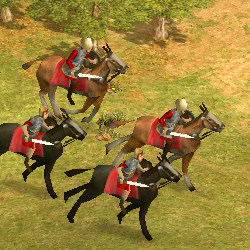
The equites speculatores are lightly-armoured cavalrymen ideal for skirmishing. These men are not Romans - they are Germans, recruited into Roman service as auxiliaries. Armed with javelins, they can attack from a safe distance and then quickly withdraw before the enemies come too close. Historically, as the equites became more of a political and economical force than a military one, foreign auxiliaries completely replaced the italic cavalry of the late Republican army. These cavalry auxiliaries were recruited from numerous peoples, most notably the Iberians, Gauls, Germans and Thracians.

The soldiers in this unit are veterans who have voluntarily reenlisted after being discharged from the army. As a result, they are highly experienced, much more so than the ordinary legionaries. Another benefit of their status is that they receive the best armour available: the latest models of the Montefortino and Coolus helmets, a pair of greaves and a chain mail suit. They still fight with a gladius sword like regular infantry, but it is possible to tell them apart from other legionaries by their unbeatable levels of skill, discipline and endurance. Historically, discharged soldiers were able to reenlist into a veteran corps in the Roman army. They received more privileges than normal infantry, holding a higher rank and not having to partake in routine duties.
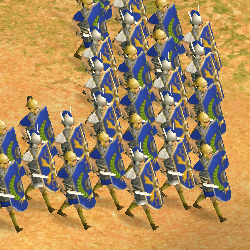
These soldiers are elite infantry who have been trained to fight outside the heavy infantry formation. They may be lightly armoured, but they are highly skilled soldiers. The antesignani have the agility to scout and skirmish, but they are still able to take on heavy infantry and cavalry with their spears. Historically, by the early 1st century BC the Roman army had no infantry outside the heavy infantry formation. The velites had disappeared after the Marian reforms and the pedites extraordinarii had received Roman citizenship and became regular infantry after the Social War. As a result, some of the legionaries were trained to fill this gap and fight as antesignani.
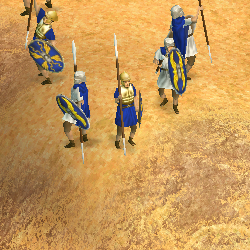
We hope you enjoyed this preview of the Roman faction. And stay tuned, because part 2 will be coming out soon!
As usual, feel free to post your questions and comments here.
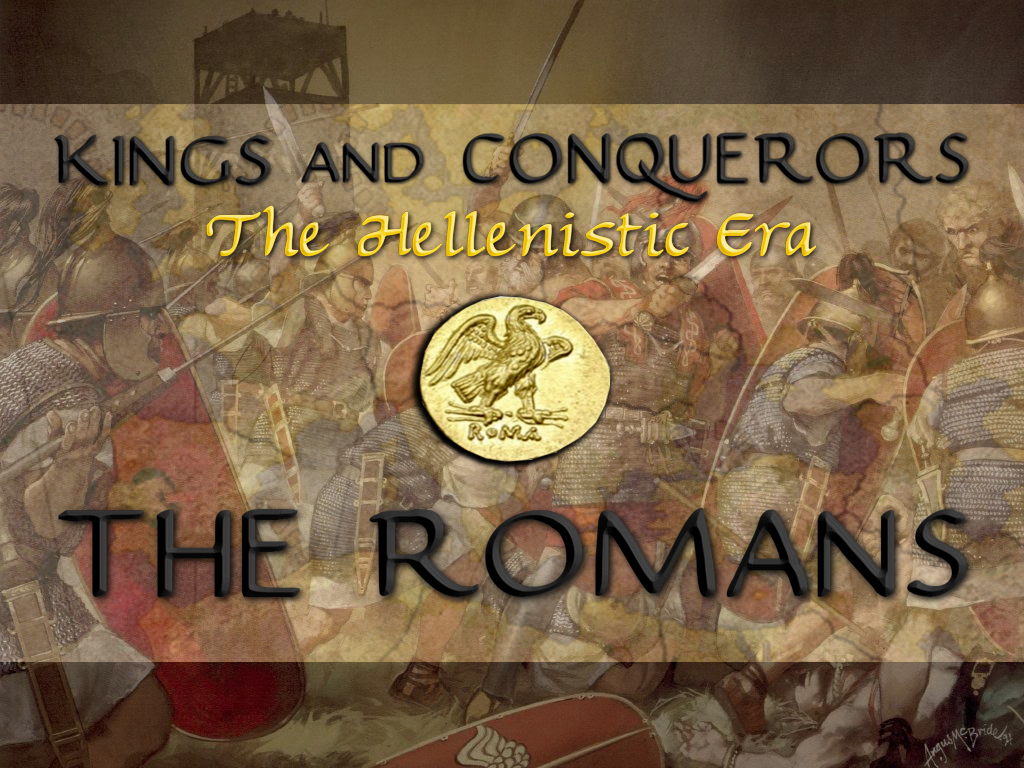


Im positive this will be the Euroba Barbarorum of RoN. Great work.
Thank you very much! I certainly get some inspiration from EB, especially when it comes to historical accuracy.
Good to see this around, and you've also changed the preview image too! It was high time that one got removed.
I finally found a way to mod ships, mind you, so expect some new models in the next 2 months!
BTW, "sophistication in".
What don't you like about the other preview image?
And thanks for pointing that error out, it's been corrected.
Well (1), it didn't flow well, and (2), it also contained old material from Rise of Kings which clashed with the new objectives of K&C. Thank god you've replaced it since. Anyone who saw this mod project listed in the mod pages on Moddb would've felt misled.
I would change mine myself, but it seems that we hardly have any time left for ourselves these days save the bare essentials.
I only realised after replying to you that you were referring to the header rather than the preview image for this particular article. I definitely agree with you about that.
This is progressing beautifully, what will you work on next? I have time to do some units, e-mail me what you need.
Thanks, I'm going to continue working on the Romans, which means completing the rest of their units and buildings, and then properly implementing them in game with stats and everything. I'll send you an email with what I need, so look out for it.
This comment is currently awaiting admin approval, join now to view.